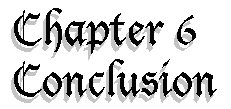





|
They went on doing business, arranged for journeys, and formed views. How should they have given a thought to anything like plague, which rules out any future, cancels journeys, silences the exchange of views. They fancied themselves free, and no one will ever be free so long as there are pestilences. --Albert Camus |
The Black Death was a definite force for change in the Middle Ages. The changes that came about were generally an intensification of new practices or modes of behavior, which did not in fact begin with the pandemic. It has been noted that changes in societal and economic patterns of living after the plague had a definite relation to the ultimately complete breakdown of feudalism and to "modern" movements such as the Reformation.
In the realm of the economy we have noted the change from the system of "high farming" to a system of individual leaseholds and owner-tenants. The shift of population from the rural areas to the cities, made possible by lucrative salaries and emerging industry, was an important milestone in the development of the time. We can especially see the hand of death in the scarcity of farm labor and the subsequent payment of higher wages which necessitated more efficient use of the land. From this need, and the profitability of husbandry, enclosures resulted which give England the appearance it has today as a country of hedgerows.
The Church reeled from the blows dealt it and suffered greatly due to plague. In its endeavor to set an example worthy of the highest respect, it did not take into account the fallibility of all mankind. The scrawled handwriting of nearly illiterate clerks who replaced the learned victims of the pestilence were living evidence of the weaknesses revealed by indiscriminate death. Men began to think that it took no special sacrament to petition his God or obtain God's grace. This was made evident by measures taken by the Bishop of Bath and Wells and other members of the higher clergy. Fertile seeds of the Reformation were sown during the Black Death.
Men and women left adrift by the plague, though fearing retribution, feared an end to life even more. Camus' faith in humanity can be admired, for he wrote: "What's true of all the evils in the world is true of plague as well. It helps men to rise above themselves.'' (Camus, 115) The suggestion may be made that in the fourteenth-century the exact opposite was closer to the truth. The persecutions of minorities was in the worst tradition of mankind, but it can be countered that medieval man's ability to recover and adapt to the new situation is worthy of praise. Both death and war played their part in molding a true nation-state. And, again, the Church was the loser as the dignity of being "English" prevailed over the concept of Universal" or Catholic Christian.
The Dance of Death, which vividly conveyed the concept that all men were equal in death's eyes, may have exhibited a fear of dying and a feeling for the goodness of life. All men died, but did all men really live? Was heavenly rest and salvation to be lived for, or was life to be enjoyed and appreciated. Should men not wonder as Hamlet did, whether to bear those ills at hand than aspire to the unknown?
It has been stated that the Black Death initiated a long period in which disease played a major part in the lives of all individuals. (Langer, 292-293) This microbial disease was no footnote in history. It was a major historical event. The history of fourteenth-century England could not be fully comprehended without knowledge of plague and its effects.
Plague, typhus, influenza, cholera, and smallpox worked hand in hand to brush aside the life of humanity. The much-heralded Renaissance was lived while epidemic threatened man with the scythe of death. The Black Death had made man aware of what he could endure. Once this was discovered no obstacle could stay him in life.
| Continue to Appendix I |
